The need for grounding in a new building is associated, first of all, with the tasks of protecting residents from electric shock and ensuring the functionality of devices connected to sockets. However, it must be remembered that an incorrectly assembled structure or the use of an erroneous electrical circuit can lead to the failure of household appliances.
An example of the need for grounding
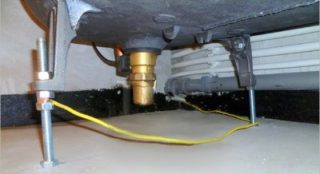
It is necessary to ground the wiring to prevent a capacitive current shock resulting from voltage leakage along the branch of the LC filter, the middle of which is connected to the body of the device. Such filtering devices are used, for example, in some models of washing machines. When the washing machine is connected to an ungrounded socket, the potential difference between the surface of the device and the person in the vicinity will be equal to the input voltage divided by 2. The described case is also fraught with the possibility of false triggering of the RCD.
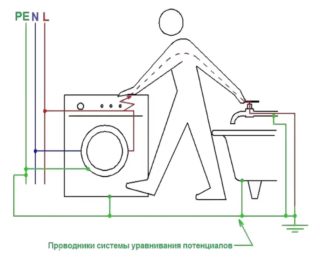
Another example is the prevention of the consequences of electromagnetic incompatibility of devices connected to the network. In the event of a break in the zero working cable, in this case, all devices connected to the network fail. Also, grounding is important to protect electronic computing devices from electrical discharge emanating from the human body. It has low power, but sometimes it is enough for the device to fail or start to freeze. The grounding system equalizes the potentials, thereby preventing the situation when, at the same time touching the heating pipe and the working panel of the computer, the latter begins to malfunction due to the arrival of an electric discharge.
Existing grounding systems
In the practice of electrical work, the following are used:
- TN-C is a very popular, but not very reliable system without an additional loop and protective cable. The last and working zero functions are combined in a PEN cable. Input cables are PEN and three phase, output cables are PEN and one phase.
- TN-S differs from the previous one by the separation of the neutral and protective conductors throughout. Then the number of cables at the input and output is 5 and 3, respectively.
- TN-C-S - from the substation to the apartment, the conductors are connected, but in the ASU they are separated, and the list of input and output wires is identical to the TN-S system, but the implementation will be cheaper.
- TT - voltage passes through zero and three phases, and the ground wire is separated from the neutral and is located at the entrance. The scheme is perfect for the private sector.
- IT - electricity goes through three phase cables, and the neutral is separated from the ground, and the reliability of the insulation must be constantly monitored. Suitable for electrical installation.
TT IT
If in doubt when choosing a system, it is recommended that you consult with a competent electrician.
How to make grounding in an apartment if it is not there
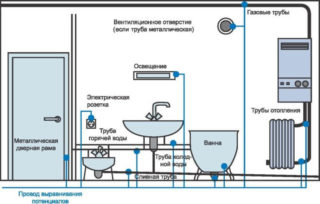
If there is no grounding in the house, the tenant should consider options for organizing a grounding system in a high-rise building. The following cases are possible:
- The preferred option is to ground the wiring, observing all the rules of the PUE. You can ask your home electrician to find out which type of system is right for you.If we are talking about grounding in an old-built apartment building, you need to find out if they plan to change the outdated system to TN-C-S.
- In low-rise buildings (less than 5 floors) for one or several apartments, you can make TT-grounding, organize a separate circuit that does not depend on the source.
It is strictly forbidden to use "fast" options like installing a protective cable for a separate apartment - it is fraught with consequences for the health of residents.
Stages of self-conduct
- turn off all plugs and machines, turn off the current in the apartment;
- provide a free view of the wiring, remove plaster;
- remove the sockets and connect wires with stripped ends to their contacts;
- connect the outlet terminals and then de-energize the entire residential building (or riser);
- connect the organized grounding to the common phase ground.
After that, you can turn on the power supply in the building and the apartment itself.
Where to get grounding in the floor panel
If grounding is not provided by the developer company, consumers are most interested in how to protect themselves from electric shock. There are two safe ways to solve this problem.
RCD connection
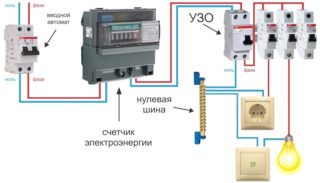
The residual current device cuts off the power supply to the unit, which has a leakage current (as well as the corresponding outlet). In addition to this, it is possible to replace the wiring in the apartment with a three-core one. If, after that, grounding works are carried out at the entrance, the owner will only have to bring the PE-cable to the desired shield bus.
Installation of your own circuit
A single-core copper PE cable is laid to the basement at least 4 mm in diameter. 3 metal corners are installed near the house. The triangle is connected to the wire, its second end is installed on the shield. Now the apartment grounding must be connected to the shield.
What to do is not recommended
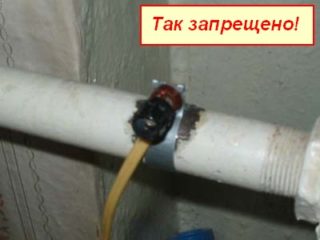
Sometimes apartment owners, in order to save money, try to use "non-standard" options for organizing grounding - for example, a jumper between zero and a protective conductor, screwing protection only for their apartment, using heating or gas pipes as grounding conductors. Doing this is strictly prohibited.
Local intervention in the network using “quick solutions” does not protect against emergencies, moreover, its organizer will not be able to present a material risk due to the lack of an official right to make upgrades to the existing system. Using pipelines as grounding can result in the death of the occupant or the destruction of the building.
Before setting up a grounding system, you should consult with your home service personnel regarding the preferred system option. Unauthorized actions can cause serious damage to the inhabitants of the apartment.

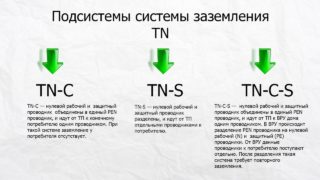
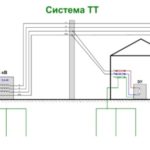
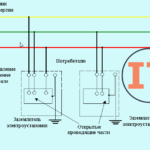
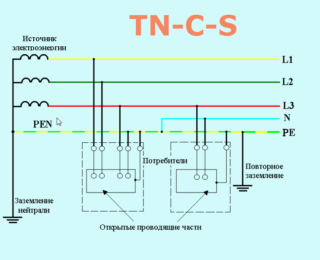








in the RCD connection diagram there is not accuracy - connecting a lighting lamp with a switch, the switch must break the phase wire, this is not critical, but all the same? !!!
If you live on the 5th floor, then you need to lead a wire to the basement? That through all floors to drill plates? And who will resolve it interesting
Become me is written in a language incomprehensible to the layman. Everything is confusing and no specifics.
I also have no grounding in the nine-story building. And in order to somehow protect myself from the breakdown of the washing machine to the case, I zeros its case and make sure that the electricians do not change the phase from zero. And what else could I do, if you know, tell me the way, just explain it easier.
The case of the floor panel on the 5th floor must be reliably connected by a bus to the case of the input switchgear (ASU) in the switchboard, which is connected to the main grounding bus (GZSH), to which the protective grounding conductor is connected from the ground loop, therefore, a separate protective grounding (PE) wire is laid about the switchboard housing will fulfill its role (neutral conductor N is also connected to the housing of the switchboard). The system is called TN-C-S. All this is written in the article, and if you still ask a question, then it is better to pay money to a specialist, because you will most likely do it stupidly.
Only a narrow-minded person will follow this, all "0" are connected to the bus of the case, and the phase through the machine to the counter. Well, what kind of electrician will swap them. In general, if you don't understand anything, then don't read it. The article contains the basics of electrical engineering and in a very understandable language.
Electricians can change the phase to zero with a good repair with veins coming from the apartment. Previously, experienced ones were allowed, now sloppy ones can work. Victor, put an RCD in the box for a typewriter. "Ground" from input zero with an RCD with a separate wire. All errors will work RCD plus is convenient to turn off the machine, because. from the button does not turn off (the incoming board, like a TV, is energized) An electrician (not everyone) will help you with these tricks
Victor,
I also live in a nine-story building with a two-wire system, and the sockets of the washing machine and boiler installed in the bathroom 2x2 m, each connected with its own wire VVG-ng 3x2.5 mm2, leading them through the walls through the SLEEVES from the scraps of polyethylene pipes of the warm floor into the floor distribution board, connecting phase wires to it through the AV-16 mounted on the wall (in a box bolted to 10-mm plywood), zero - to its own bar in the shield (until that day, a RES electrician had overhauled our shield with a complete replacement and fittings with a modern company " ABB ", and wires), and grounding - each on a SEPARATE screw screwed into the shield case.
If there is no zero bar, tighten the screw into the shield body, but a dozen cm further from the grounding bar.
So I was recommended by THREE PROFI-electricians who did not know each other.
TT- is currently banned in Russia. The switch through "0" is a categorical prohibition in the PUE. Light through an RCD? What regulatory document can the author refer to? No need to write about what you are poorly versed in. Write about football!